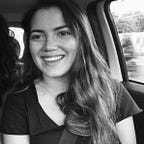Bio-Symphony
Greta Chen, Anya Li, Zhihan Xu, Willow Yan, Sofia Alexiou
For this brief we had to design and make a biomaterial instrument and play it in class. Anoushka and Ronnie presented their work and relevant examples for us to have a reference. Anoushka’s recipes for biomaterial bases were particularly helpful and that’s what we decided to start with. We had a couple of materials available to us like Algae, Glycorin and a contact mic to start with. We were unsure as to how to use the contact mic. In the beginning, I foolishly thought the contact mic was going to be able to catch the slightest of sounds, which obviously was not true.
We created 3 different bunches of bases, a very solid one and two more liquid ones and exposed some of them to different bacteria, like blueberries, swabs from our mouth and skin and even lemon juice. It was not long until we realized that this would produce absolutely nothing. The contact mic wasn’t even close to recording the growing of bacteria and microorganisms. That’s when we started thinking about found biomaterial like fruits and vegetables and what we could do with that. We went to our local Sainsbury’s all together and purchased different veggies and fruits we thought we could turn into instruments.
During our midweek tutorial we showed both our biomaterial bases and our food instruments. On our first tutorial, with Tonicha and Anoushka, we got the green light to proceed with the food instruments, but on our second tutorial with Al, John and Ronnie we were told that this idea was too basic and that we shouldn’t focus on music in the traditional sense but sound in general. That’s when we decided to play for them our egg instrument, which resembled the sound of a train whistle.
Through that connection and the feedback we received we decided to recreate the environment of a train station. In the following video you’ll see a breakdown of each sound, how it was created and how it sounded through the equivalent recording device. We recreated sounds like a heartbeat, luggages rolling, rain, trains and others.
When we performed all together most of it was lost unfortunately because most of our sounds were very gentle in comparison to those of other groups. Overall, this was an exciting brief that I personally would prefer to have more time with or a more refined objective. The very limited time didn’t allow us to experiment with more sophisticated ways of making sound. However, if I have to work on something similar in the future I’ll know a thing or two more and I also learned how to use an H4N recorder.
